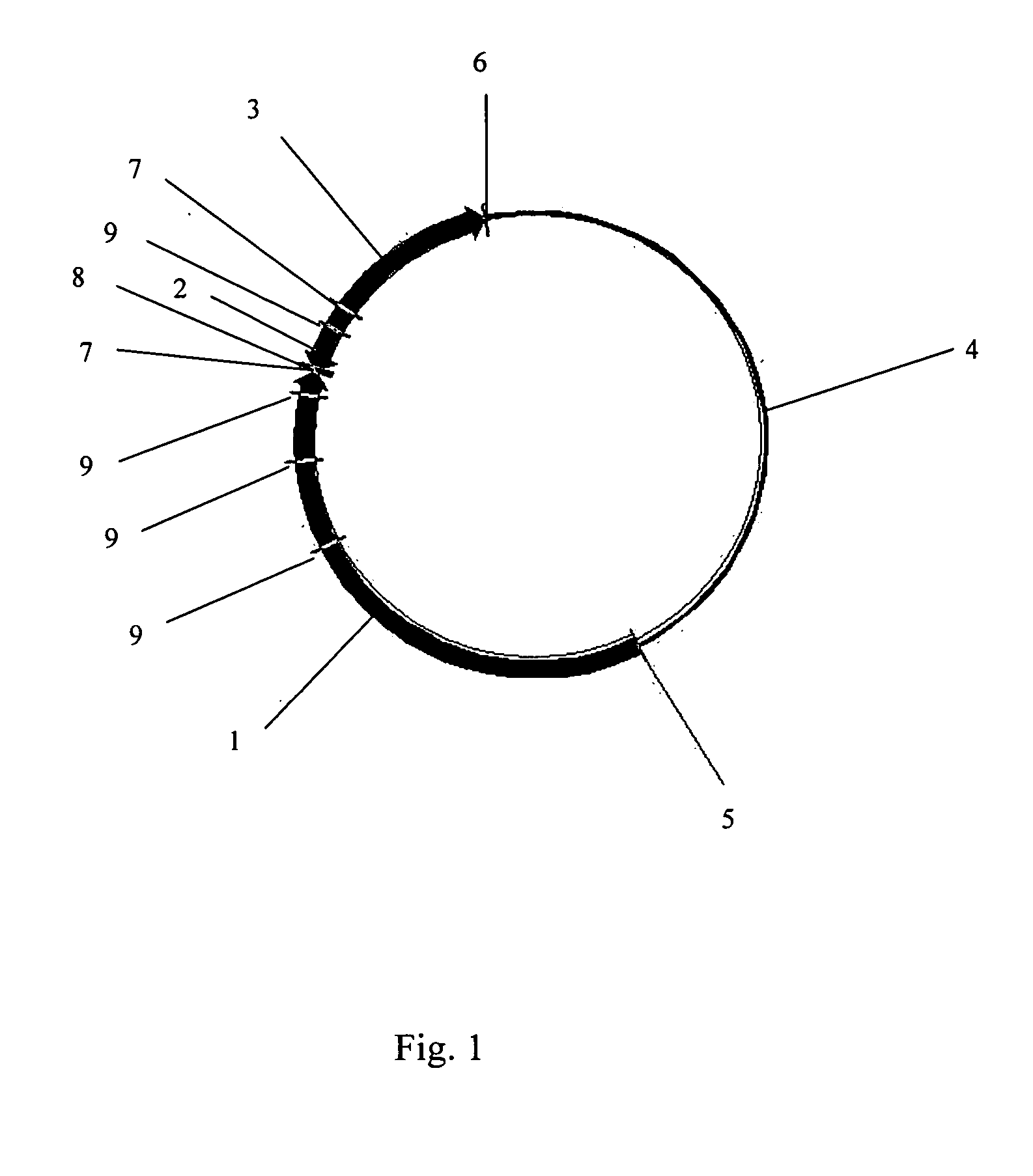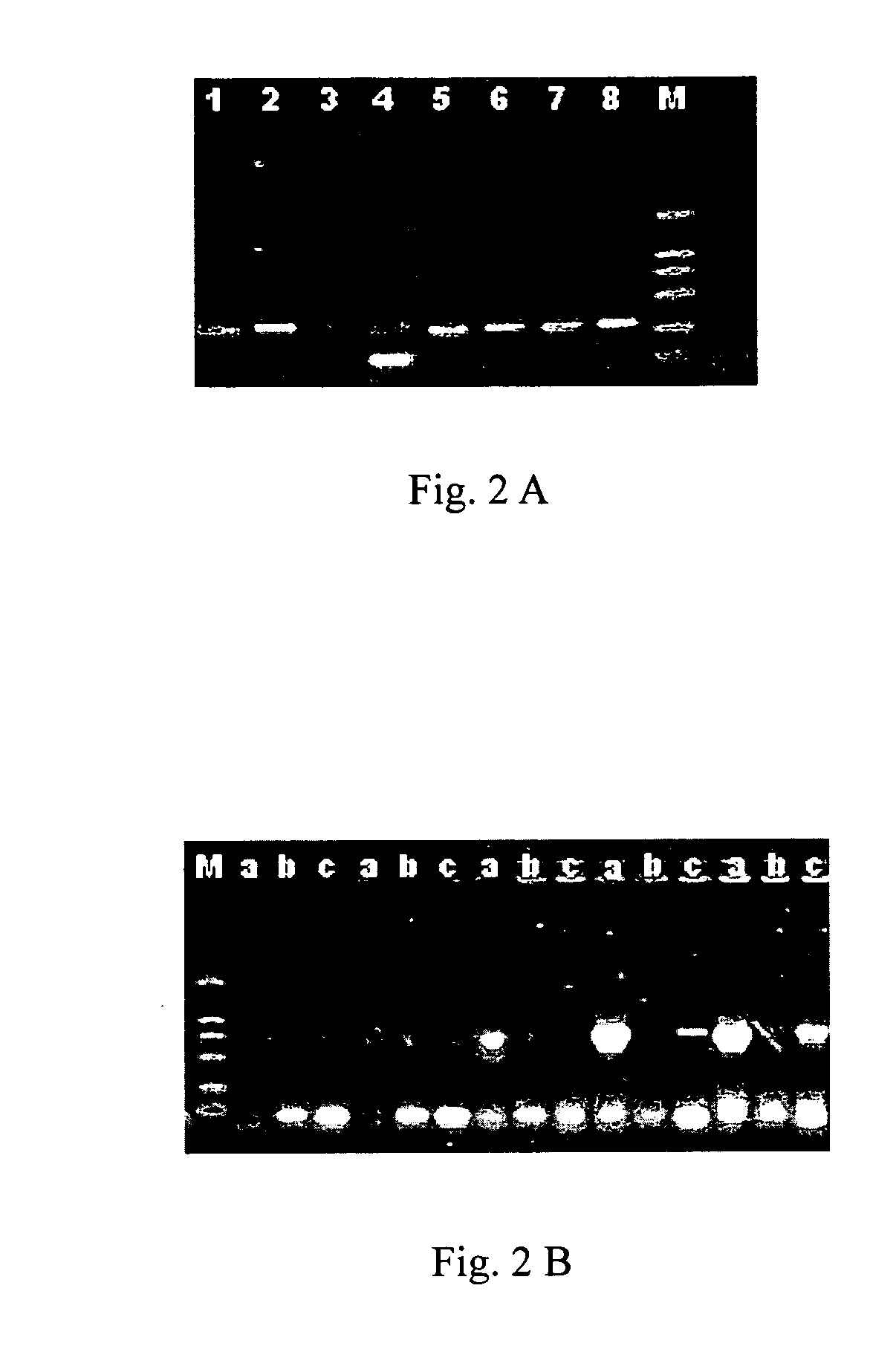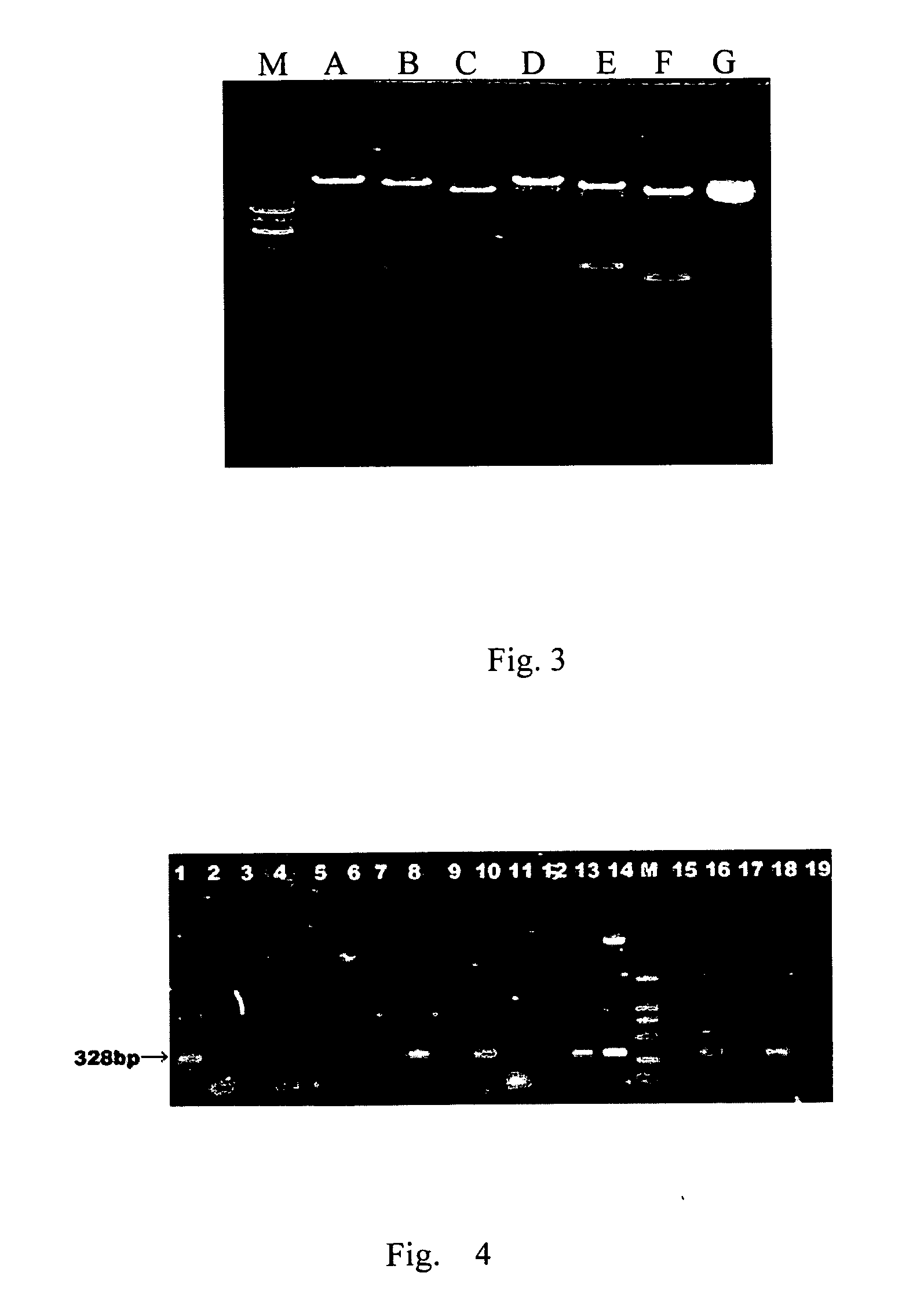Method for preparing a sterile transgenic fish
a transgenic fish and sterile technology, applied in the field of transgenic fish, can solve the problems of irreversible influence, difficult to obtain tetraploids, commercial examples of transgenic fishes have not been reported, etc., and achieve the effect of convenient operation and easy operation
- Summary
- Abstract
- Description
- Claims
- Application Information
AI Technical Summary
Benefits of technology
Problems solved by technology
Method used
Image
Examples
example 1
The Construction of Antisense RNA Expression Vector of Salmon-Type Gonadotropin-Releasing Hormone (pCAsGnRHpc-antisense)
[0024] The antisense RNA expression vector of salmon-type gonadotropin-releasing hormone (pCAsGnRHpc-antisense) comprises a promoter of carp β-actin gene with 2532 bp length (the nucleotide sequence thereof is represented by SEQ ID NO:1 and which is obtained by selecting the genome library of carp by general methods), a 323 bp target gene which is the cDNA fragment of reversed salmon-type gonadotropin-releasing hormone gene from carp (the nucleotide sequence thereof is represented by SEQ ID NO:2) and is inserted into the downstream of the promoter by 3′-5′ direction, a stop sequence of 3′ flanking sequence of grass carp growth hormone gene with 790 bp (the nucleotide sequence thereof is represented by SEQ ID NO:3). The backbone of the antisense vector is pUC118 (SABC Corp.)
[0025] (1) The Specific Construction Process is as Follows.
[0026] The cDNA fragment of sGn...
example 2
The Preparation of a Transgenic Fish
[0039] The antisense RNA expression vector of salmon-type gonadotropin-releasing hormone (pCAsGnRHpc-antisense) is digested by restriction endonuclease EcoR I and Hind III to obtain linear recombinant DNA fragment (CAsGnRHpc-antisense). The recovered DNA fragment was dissolved into buffer ST (88 mM NaCl, 10 mM Tris-HCl, pH7.5) with a final concentration of 50 ng / μL. The oosperm of carp is digested by 0.25% trypsase to remove ootypus and then is introduced with above DNA solution at animal pole before first merogenesis by microinjection method. And the amount of DNA is about 5×105 copies / oosperm. The oosperm treated by micromanipulation is then incubated in sterile environment of the laboratory.
example 3
The Selection of the Sterile Transgenic Fish
[0040] (1) The Detection of Positive Transgenic Fish by PCR
[0041] The DNA fragment was extracted from tail fin tissue of carp with 0.5×0.5 cm size. The tube containing tail fin of carp was added 0.4 ml DNA extraction buffer (10 mmol / L EDTA, 10 mmol / L Tris.HCl, 300 mmol / L NaCl, 2% SDS) and then incubated in water bath at 55° C. for 1-2 hours followed by incubating in water bath at 37° C. overnight. The digested tissue solution was extracted by phenol, phenol / chloroform, and chloroform, respectively and was precipitated by adding 2.5 fold volume of ethanol. Once performed, the precipitate was transferred into another tube on time and was washed by 70% ethanol, and then precipitated by centrifuging with high speed for 1 min. Ethanol was removed from the tube completely and then the tube was incubated in the incubator at 37° C. for 15 min. Suitable volume of TE buffer containing 20 mg / ml RNase was added into the tube and then the tube was pl...
PUM
| Property | Measurement | Unit |
|---|---|---|
| concentration | aaaaa | aaaaa |
| weight | aaaaa | aaaaa |
| population structure | aaaaa | aaaaa |
Abstract
Description
Claims
Application Information
 Login to View More
Login to View More - R&D
- Intellectual Property
- Life Sciences
- Materials
- Tech Scout
- Unparalleled Data Quality
- Higher Quality Content
- 60% Fewer Hallucinations
Browse by: Latest US Patents, China's latest patents, Technical Efficacy Thesaurus, Application Domain, Technology Topic, Popular Technical Reports.
© 2025 PatSnap. All rights reserved.Legal|Privacy policy|Modern Slavery Act Transparency Statement|Sitemap|About US| Contact US: help@patsnap.com



